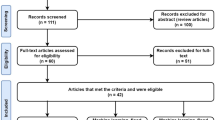Abstract
The application of generalised extreme value distribution (GEVD) requires the estimation of three parameters. Different researchers adopted different techniques for the estimation of the GEVD parameters and no standard comparison amongst those methods are available. This paper investigates the comparison of the commonly used GEVD parameters’ estimations for extreme rainfall modelling. The maximum likelihood estimation, generalised maximum likelihood estimation, Bayesian and L-moments methods were considered in this study to compare the magnitude of the GEVD parameters and the corresponding return level estimations. The analysis was performed using the monthly and yearly extreme rainfall of Tasmania, Australia. The GEVD was fitted to four different data sets using the four parameters estimation techniques. Estimated return levels of the GEVD for all the estimation techniques were compared with the return levels provided by the Australian Rainfall and Runoff (ARR), which is the national guideline for Australian rainfall and flood studies. The outcomes of the analysis suggest that the L-moments method is the better estimator of the return levels when comparing the ARR provided return levels.




Similar content being viewed by others
Data availability
Used data can be obtained through requesting the first author.
References
ARR (2016) Australian rainfall and runoff: a guide to flood estimation. http://book.arr.org.au.s3-website-ap-southeast-2.amazonaws.com/. Accessed on 12 Oct 2020.
Coles S (2001) An introduction to statistical modeling of extreme values. Springer, New York, NY
Cunnane C (1989) Statistical distributions for flood frequency analysis. Word Meteorological Organization Operational Hydrology Report, No. 33
Djibo A, Karambiri H, Seidou O, Sittichok K, Philippon N, Paturel J, Saley H (2015) Linear and non-linear approaches for statistical seasonal rainfall forecast in the Sirba watershed region (SAHEL). Climate 3:727–752
Dyrrdal AV, Skaugen T, Stordal F, Førland EJ (2016) Estimating extreme areal precipitation in Norway from a gridded dataset. Hydrol Sci J 61:483–494
Embrechts P, Klüppelberg C, Mikosch T (1997) Modelling extremal events: for insurance and finance. Springer
Gado Djibo A, Seidou O, Karambiri H, Sittichok K, Paturel JE, Moussa Saley H (2015) Development and assessment of non-linear and non-stationary seasonal rainfall forecast models for the Sirba watershed, West Africa. J Hydrol Reg Stud 4:134–152
Haddad K, Rahman A (2011) Selection of the best fit flood frequency distribution and parameter estimation procedure: a case study for Tasmania in Australia. Stoch Env Res Risk Assess 25:415–428
Hosking JRM, Wallis JR, Wood EFJT (1985) Estimation of the generalized extreme-value distribution by the method of probability-weighted moments. Technometrics 27:251–261
Hossain I, Esha R, Imteaz MA (2018a) An attempt to use non-linear regression modelling technique in long-term seasonal rainfall forecasting for australian capital territory. Geosciences 8(1–12):282
Hossain I, Rasel HM, Imteaz MA, Mekanik F (2018b) Long-term seasonal rainfall forecasting: efficiency of linear modelling technique. Environ Earth Sci 77(1–10):280
Hossain I, Rasel HM, Imteaz MA, Mekanik F (2020a) Long-term seasonal rainfall forecasting using linear and non-linear modelling approaches: a case study for Western Australia. Meteorol Atmos Phys 132:331–341
Hossain I, Rasel HM, Mekanik F, Imteaz MA (2020b) Artificial neural network modelling technique in predicting Western Australian seasonal rainfall. Int J Water 14:14–28
IPCC (2012) Managing the risks of extreme events and disasters to advance climate change adaptation. A special report of working groups I and II of the intergovernmental panel on climate change
Katz RW, Parlange MB, Naveau P (2002) Statistics of extremes in hydrology. Adv Water Resour 25:1287–1304
Khastagir A (2008) Optimal use of rainwater tanks to minimize residential water consumption. Masters by Research, Civil, Environmental and Chemical Engineering,RMIT University
Khastagir A (2018) Fire frequency analysis for different climactic stations in Victoria. Nat Hazards 93:787–802
Khastagir A, Jayasuriya N (2008) Role of rainwater tanks in managing demand during droughts'. In: Corinne C (ed.) Enviro 08 Proceedings, Australia, 05–07 May 2008
Khastagir A, Jayasuriya N, Bhuyian M (2017) Use of regionalisation approach to develop fire frequency curves for Victoria, Australia. Theor Appl Climatol 134:849–858
Khastagir A, Jayasuriya N, Bhuyian M (2018) Assessment of fire danger vulnerability using McArthur’s forest and grass fire danger indices. Nat Hazards 94:1277–1291
McNeil AJ, Frey R, Embrechts P (2015) Quantitative risk management: concepts, techniques and tools-revised edition. Princeton University Press
Mekanik F, Imteaz MA, Gato-Trinidad S, Elmahdi A (2013) Multiple regression and artificial neural network for long-term rainfall forecasting using large scale climate modes. J Hydrol 503:11–21
Papalexiou SM, Koutsoyiannis D (2013) Battle of extreme value distributions: a global survey on extreme daily rainfall. Water Resour Res 49:187–201
Ragulina G, Reitan T (2017) Generalized extreme value shape parameter and its nature for extreme precipitation using long time series and the Bayesian approach. Hydrol Sci J 62:863–879
Serinaldi F, Kilsby CG (2014) Rainfall extremes: toward reconciliation after the battle of distributions. Water Resour Res 50:336–352
Yilmaz AG, Hossain I, Perera BJC (2014) Effect of climate change and variability on extreme rainfall intensity–frequency–duration relationships: a case study of Melbourne. Hydrol Earth Syst Sci 18:4065–4076
Funding
The study was not supported by any funding.
Author information
Authors and Affiliations
Contributions
IH—Analysis and draft paper writing; MAI—Project management, supervision and final paper preparation; AK—Data collection and quality checking.
Corresponding author
Ethics declarations
Conflict of interest
The authors declare that they have no conflict of interest.
Additional information
Publisher's Note
Springer Nature remains neutral with regard to jurisdictional claims in published maps and institutional affiliations.
Rights and permissions
About this article
Cite this article
Hossain, I., Imteaz, M.A. & Khastagir, A. Effects of estimation techniques on generalised extreme value distribution (GEVD) parameters and their spatio-temporal variations. Stoch Environ Res Risk Assess 35, 2303–2312 (2021). https://doi.org/10.1007/s00477-021-02024-x
Accepted:
Published:
Issue Date:
DOI: https://doi.org/10.1007/s00477-021-02024-x




